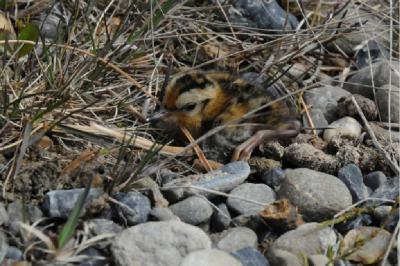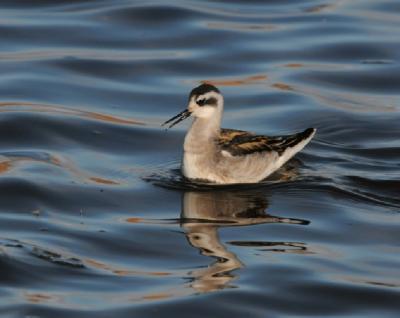A new study finds that migratory birds that breed in Arctic Alaska are initiating nests earlier in the spring, and that snow melt occurring earlier in the season is a big reason for it.
The researchers looked in nearly 2,500 nests of four shorebird species: semi-palmated sandpiper, red phalarope, red-necked phalarope, and pectoral sandpiper, and one songbird, the lapland longspur, and recorded when the first eggs were laid in each nest. The research occurred across four sites that ranged from the oilfields of Prudhoe Bay to the remote National Petroleum Reserve of western Arctic Alaska.
Snow melt was assessed in nesting plots at different intervals in the early spring. Other variables, like nest predator abundance (which is thought to affect timing of breeding), and satellite measures of "green-up"(the seasonal flush of new growth of vegetation) in the tundra were also assessed as potential drivers of the change in nest timing, but were found to be less important than snow melt.

Just hatched Arctic shorebirds, like this long-billed dowitcher above, need to feed on abundant insects to grow and get ready for their southward migration in mid-summer. With earlier and earlier springs, shorebirds and other Arctic birds are challenged to adjust the timing of their breeding to insure that young have abundant resources. Credit: Steve Zack
"It seems clear that the timing of the snow melt in Arctic Alaska is the most important mechanism driving the earlier and earlier breeding dates we observed in the Arctic," said lead author Joe Liebezeit of the Audubon Society of Portland. "The rates of advancement in earlier breeding are higher in Arctic birds than in other temperate bird species, and this accords with the fact that the Arctic climate is changing at twice the rate."
The birds advanced their nesting an average of 4-7 days over the nine years of the study. This pattern agrees with the general observation of 0.5 days per year observed in the scarce few other studies of nest initiation in the Arctic. The rates of change in this pattern are much higher than those observed in studies of temperate birds south of the Arctic.
Wildlife Conservation Society
Coordinator of Bird Conservation Steve Zack said, "Migratory birds are nesting earlier in the changing Arctic, presumably to track the earlier springs and abundance of insect prey. Many of these birds winter in the tropics and might be compromising their complicated calendar of movements to accommodate this change. We're concerned that there will be a threshold where they will no longer be able to track the emergence of these earlier springs, which may impact breeding success or even population viability."

With earlier springs, Arctic Alaska shorebirds like this red-necked phalarope feeding in a small Arctic pond, need to adjust their migratory calendars to breed earlier and earlier. Such adjustments for these international migrants have unclear effects on their capacity to balance other seasonal demands in other parts of the world. Credit: Steve Zack
Source: Wildlife Conservation Society






Comments